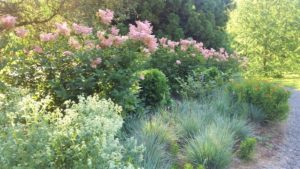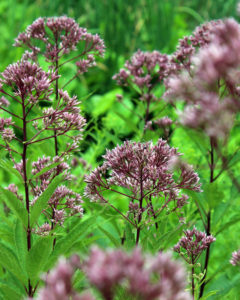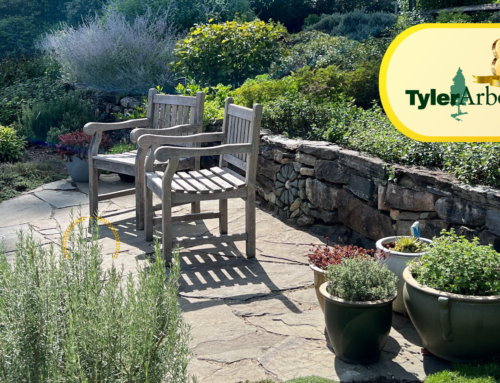Plant people tend to talk about plant species as though everyone is fluent in Latin, English and plant trade names as well. I’m guilty of this, casually saying things like ‘Oh you should definitely plant Hydrangea quercifolia ‘Ruby Slippers’ around your house! It’s shorter than the straight species!’
But what the heck does that even mean?
Fall is a great time for planting, and as we all consider adding to our gardens, here is a helpful guide to deciphering plant names – and determining their ecological value.
The phrase straight species refers to the ‘wild variety’ of a plant. A straight species plant is a type you would find growing wild in their native range. Take, for example, one of my favorite native flowers for pollinators – Filipendula rubra. Filipendula rubra is the scientific name for the plant we call Eastern meadowsweet. It’s helpful to know the scientific names as well as the common ones because common names can change based on where you are. For instance, here in Pennsylvania, we may call Filipendula rubra ‘Eastern meadowsweet’ – but if you were to fly out to Illinois that same plant would be called ‘queen-of-the-prairie’. Incidentally, this is the common name I prefer to use because it gives this stunning flower the credit it is due. But therein lies the danger of the common name; we might be talking about the same plant, but calling it different things.
Just to make it even more confusing, we may be talking about completely different plants but calling them by the same common name. For instance, there are over 100 different species of goldenrod, most of them native to North America. But each species is unique. So I might want one variety for my garden, but if I just call it ‘goldenrod’ there’s a chance I won’t get the species I’m looking for. So it’s helpful to be able to say that you are specifically looking for Solidago rigida, stiff goldenrod. That way you can be sure that the plant you are ordering or purchasing is the one you want.
But wait, there’s more! Just to make this even more complex, sometimes we plant enthusiasts throw a different name onto the end, the trade name or cultivar name. For example, let’s look at one of my favorite native hydrangeas: Hydrangea quercifolia ‘Ruby Slippers’, common name: oakleaf hydrangea ‘Ruby Slippers’. The ‘Ruby Slippers’ portion tells you that you are talking about a particular cultivated variety of Hydrangea quercifolia. These cultivated varieties are often doing something interesting that we either don’t see in the straight species or that we don’t see to the same degree. In the example, ‘Ruby Slippers’ is a cultivar that is more compact than the straight species, and whose flowers mature and dry to a deep ruby color.
The scientific and common names of plants can give you important information about the plant you are dealing with. To explore that, let’s break down another great pollinator plant, Phlox paniculata ‘Jeana’, or garden phlox ‘Jeana’. The Phlox portion of the scientific name tells you, as you might imagine, that you are looking at a plant in the Phlox genus. The paniculata lets you know that this particular Phlox is tall and summer flowering – rather than low growing and early-spring flowering like some of the other species. The ‘Jeana’ part of the name is a trade name, or cultivar name, that tells you that this variety is doing something special – in this case it is highly mildew resistant, which is a real advantage in the home garden since other varieties tend to be susceptible to this common fungus.
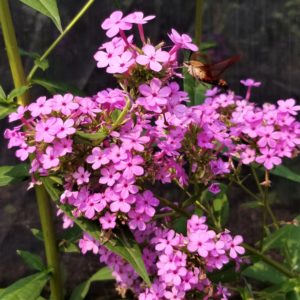
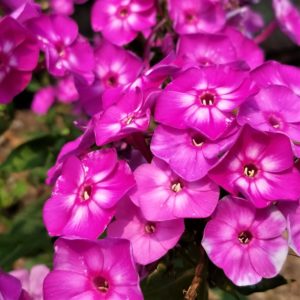
So from that one name, Phlox paniculata ‘Jeana’, you can learn that it is a summer-flowering pink phlox with great mildew resistance. That’s a lot of good information! With that data you can plan a garden that flowers when you want it to, and maintains the style you’re looking for.
But wait, what if you’re not just designing a garden for aesthetics? Are cultivars okay to include if you are designing a garden to support local wildlife? The short answer is – maybe.
The slightly longer answer is that it depends on your project and the particular cultivar. In general, the more a plant has been altered the less benefit it provides for pollinators and other insects. So if you are planting with pollinators in mind, I recommend staying away from double-flowered varieties (which are usually sterile and so don’t produce pollen or nectar), varieties that bloom at a significantly different time of year, or that have a very different color from the straight species. Pollinators won’t know to look for the plants if the color is radically changed, or if they are blooming too early or too late. It’s important to consider the project as well. A meadow planting is very different from a backyard pollinator garden. If you’re restoring a meadow, why not include the straight species, tall Joe Pye weed (Eutrochium purpureum), but if you’re gardening in a smaller space you might want to consider ‘Baby Joe’, a cultivar of coastal Joe Pye (Eutrochium dubium ‘Baby Joe’).
As with everything, a little research can really help you make these decisions. When you sit down this year to plan your fall plantings, take a look at the full names of the plants you’re considering to make sure you’re getting what you’re looking for. And if there is a cultivar you love, do a little reading to see if it still provides pollinator benefits. It’s surprising how easy it can be to create something that looks beautiful – and can support the ecosystem as well.


